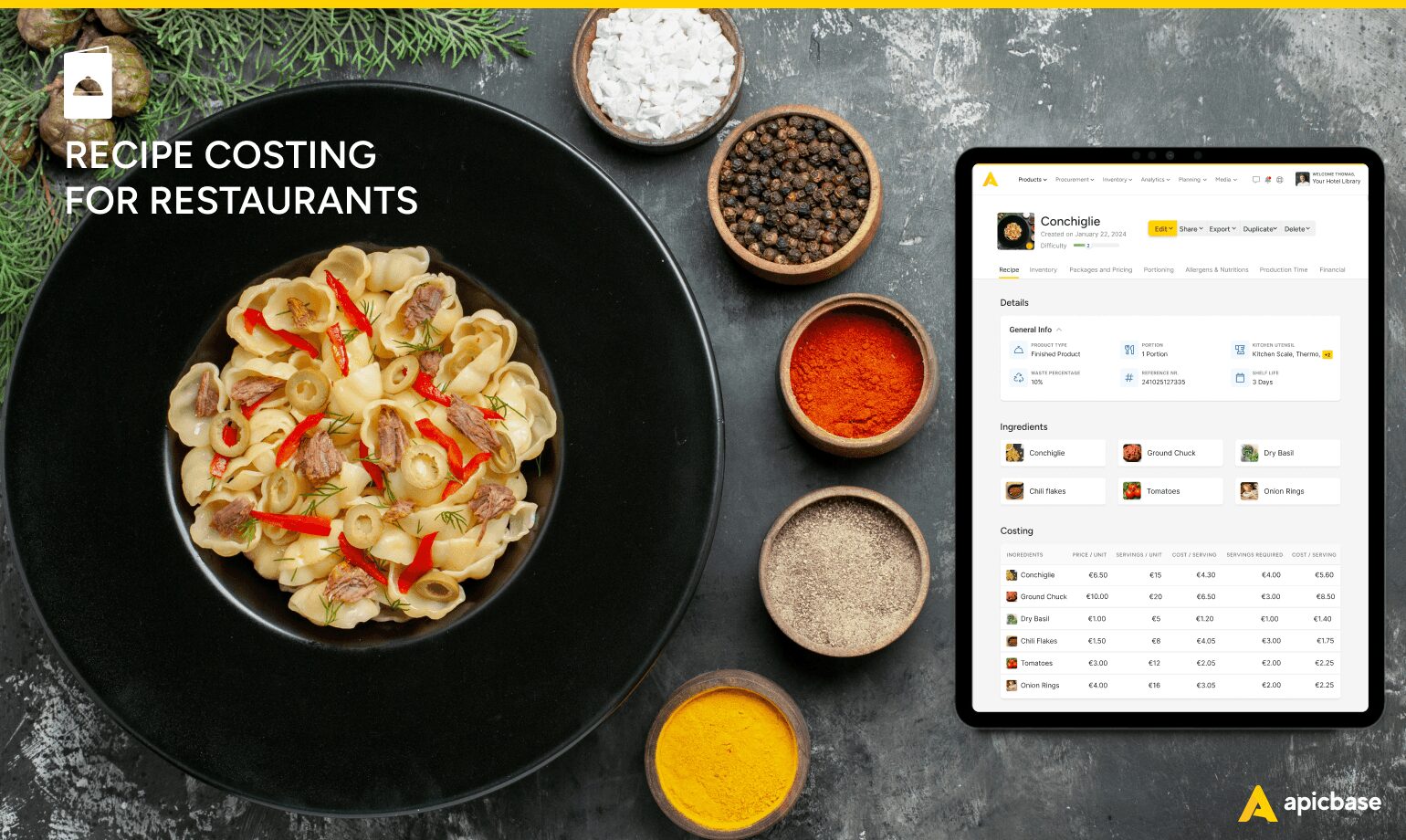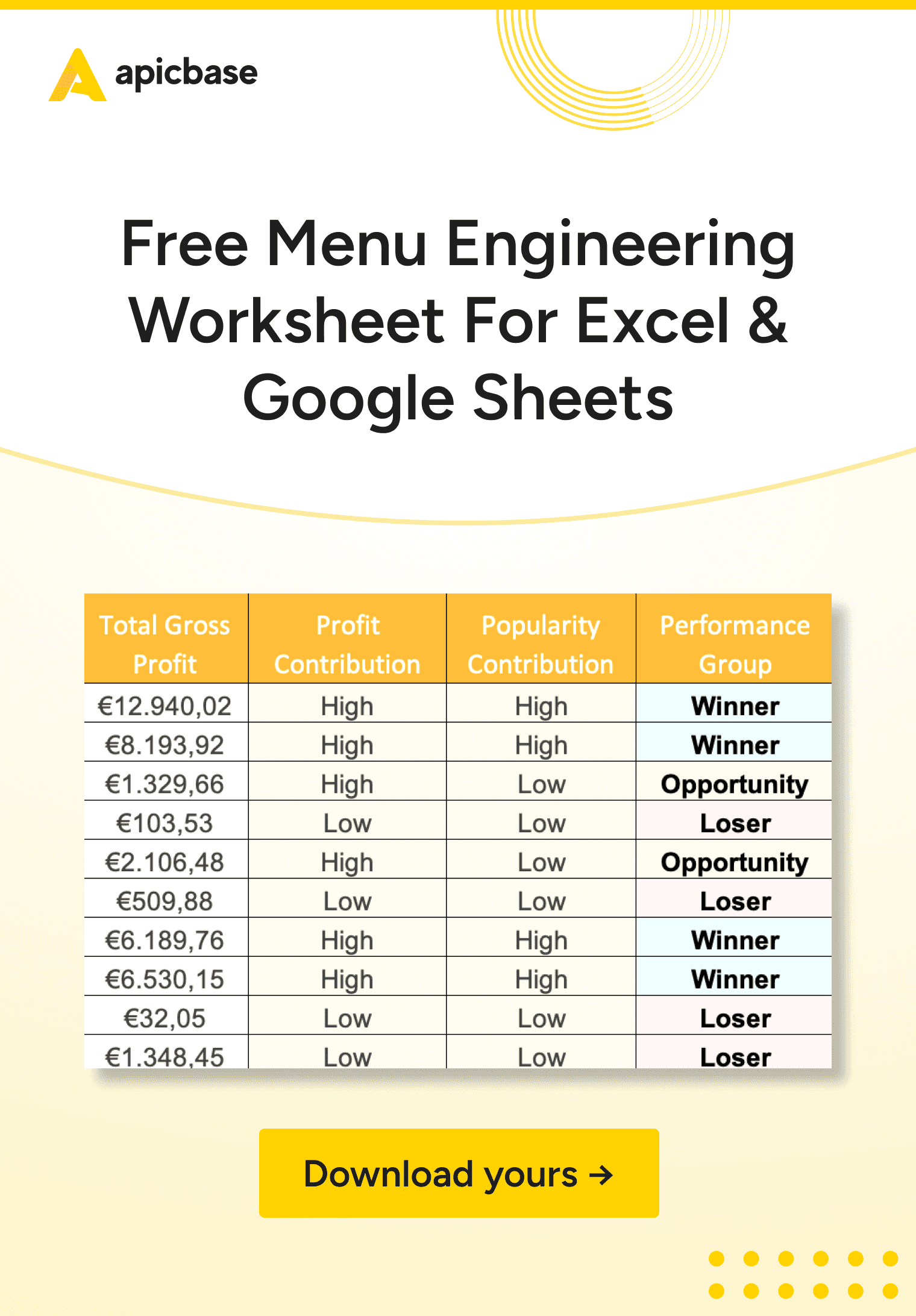This guide covers the essentials of recipe costing, including the benefits of proper calculations and the best formula to use.
If a restaurant does not know how much it costs to make one dish, they will likely lose money at every table.
Understanding the true cost of recipes underpins a restaurant’s success and financial health.
Read on to learn strategies to optimise recipe calculations and ensure every dish on your menu contributes positively to your bottom line.
What Is Recipe Costing?

Recipe costing is the method of determining the cost of ingredients and resources needed to create a dish. This financial insight is critical for setting prices, budgeting, and managing food costs.
Costing out a recipe involves itemising the expenses of every element, from main ingredients and seasoning to garnishes and takeaway packaging. This process allows food service operations to accurately determine the total cost of preparing a menu item.
Accurate cost calculations rely on proper stock management. How? Because keeping up-to-date records of standardised recipes, inventory counts, and pricing information enables calculations down to the level of individual portions or menu items.
That’s where the money is. This is why many companies no longer rely on manual calculations. The number of suppliers, ingredients and people involved makes it impossible to manage recipes and prices effectively in Excel.
Instead, they use restaurant inventory management software to monitor their costs in real-time. Which allows them to take quick corrective action should dish profits take a dive.
In return, careful cost calculations help improve purchasing, reduce food waste, and lower expenses in inventory management.
6 Reasons Why Is Recipe Costing Important?
Understanding the exact cost of each menu item is essential for:
- controlling food costs,
- enhancing menu profit margins, and
- driving greater profitability across all outlets.
Let’s have a closer look at exactly how recipe calculations contribute to success in food service.
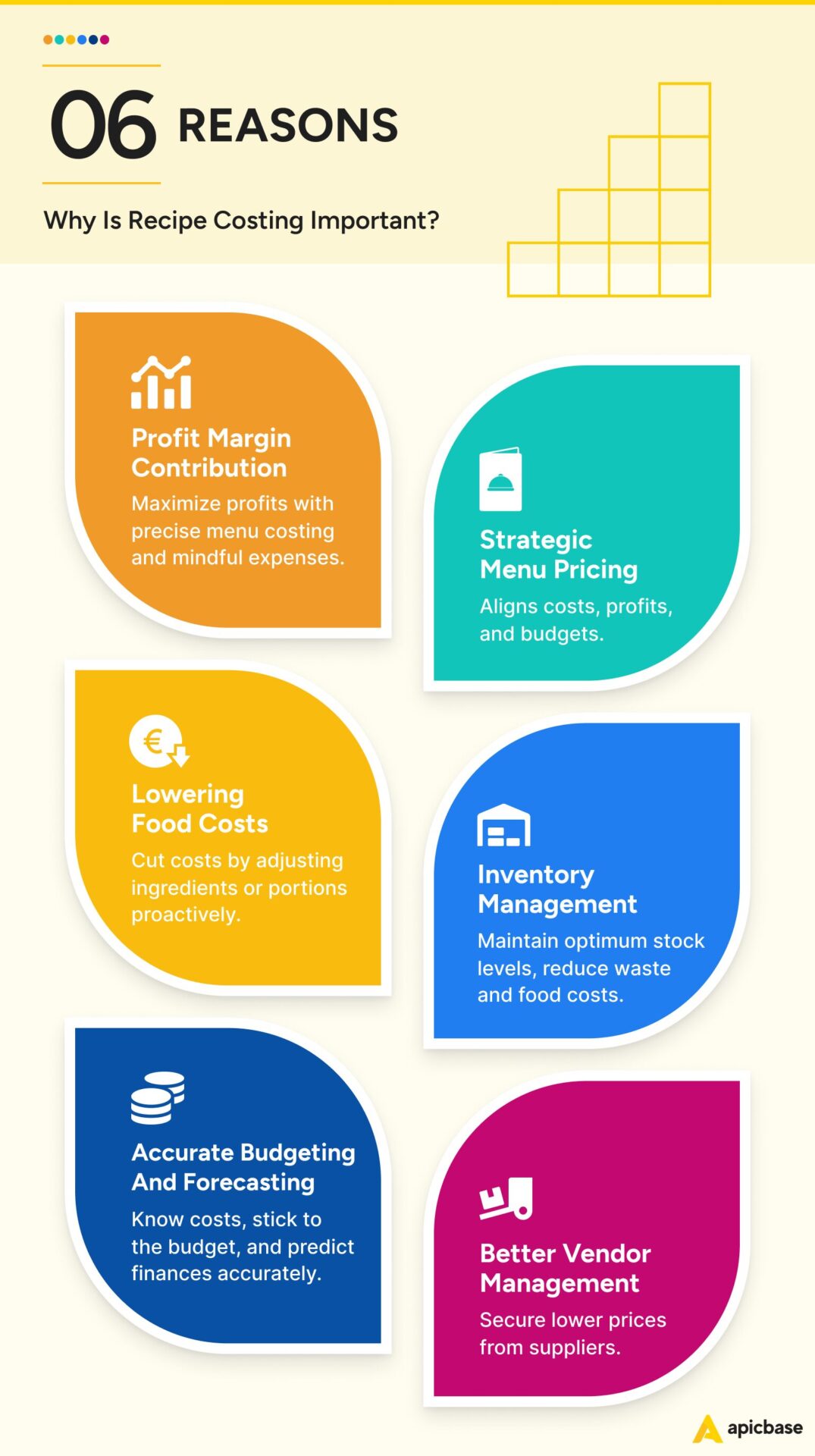
1. Profit margin contribution
Accurate menu item costing is vital for determining the profit margin of each dish. It ensures that your entire menu contributes to the overall profitability of the business.
Food costs account for roughly 30% of the menu price of an item. In practical terms, a slight change in a dish can significantly affect a restaurant’s profit margins.
For example, if your pepperoni pizza sells for €15, roughly €5 covers overheads like staff costs, rent, and utilities, €5 goes to the cost of ingredients, and €5 is profit. As the overheads are mainly fixed costs, anything you can take off the food cost goes straight to your profit margins.
2. Strategic menu pricing
Accurate recipe costing gives menu developers the information they need to strategically price menu items based on their theoretical costs, the desired profit margins, and the target customer’s budget.
Restaurant companies use this information in menu engineering and product development to align their offerings with the business goals.
A menu is the first thing customers see when looking for information about a restaurant. It makes menu pricing vital for attracting and retaining customers and maintaining profitability.
3. Lowering food costs
By identifying ingredients with a high impact on menu costs, restaurant companies can explore alternatives or adjust portions to reduce menu profitability without sacrificing quality.
This proactive cost management is essential to reduce food costs and improve margins.
4. Optimised inventory management
When effectively calculating recipes, you need to know how much of each ingredient is required to prepare one serving and convert the quantity to the cost per ingredient per dish.
This high level of precision is exactly what you need to practice accurate inventory management, which helps you maintain optimum stock levels, reducing waste and food costs.
If you know how many servings of each menu item a restaurant has sold in a given period, you immediately know how much the stock has dropped and the corresponding value of the ingredients.
Restaurants with access to detailed recipe and inventory data can keep their stock levels optimal and avoid spoilage and other food waste.
5. Accurate budgeting and forecasting
Knowing the true cost of recipes will make you many friends in the finance team.
Accurate recipe costing:
- makes it easier to stick to the budget, and
- enable more accurate financial forecasts.
As a result, the team at HQ can better plan future expenses and forecast revenues.
6. Better vendor management
You have a much stronger negotiating position with suppliers if you know exactly how much you spend with them and the impact of ingredient costs on menu prices. The same goes for substituting ingredients or looking for new suppliers.
When you have the numbers, you have leverage.
After digging into the details of each dish, you might find that a single ingredient, like an imported extra virgin olive oil, is driving the cost of some dishes up to unsustainable levels.
By shopping around, you can find a more affordable alternative product that keeps costs down but delivers excellent flavour.
Restaurant procurement software empowers you to secure lower prices from suppliers by providing detailed vendor price information. It enables your purchasing teams to manage and reduce recipe costs effectively.
Actual vs. Theoretical Food Costs
Understanding the difference between what you actually spend on ingredients (your actual costs) and what you ideally should spend (your theoretical costs) is the best financial health check imaginable for your restaurants.
Actual costs are calculated based on how much inventory you’ve used up, while theoretical costs are what you’d expect to spend if everything went perfectly—correct portion sizes, no waste, and no unexpected losses.
These numbers ideally match. When they don’t, it reveals your food cost variance.
This variance is more than just a number; it reflects how well your restaurant performs operationally.
A higher-than-expected variance signals it’s time to dig deeper:
- Are portions too generous?
- Is waste getting out of hand?
- Are unit teams ordering too much or too little stock?
Finding the answers to these questions will help you:
- fine-tune your operations,
- save money, and
- boost the overall health of your business.
The difference between actual and theoretical food costs is about striking the right balance between cost efficiency and quality service, all while keeping an eye on the bottom line.
How to Calculate Recipe Costs Using a Formula
Figuring out the cost of a recipe becomes a breeze when you have the correct formula and a list of ingredients along with their unit prices.
The straightforward approach below ensures you can accurately assess each recipe’s financial impact on your menu.
Here are the steps required to calculate your recipe costs.
1. List all ingredients
Start by listing each ingredient needed for your recipe, noting the price you paid for them upon purchase from your supplier.
In this first step, record the cost of ingredients in the form or packaging in which the vendor supplied them. For example, document the price of a whole loaf of bread rather than the cost per slice.
Here’s an example. We have started costing the recipe for a ham and cheese sourdough sandwich. This is a list of ingredients.
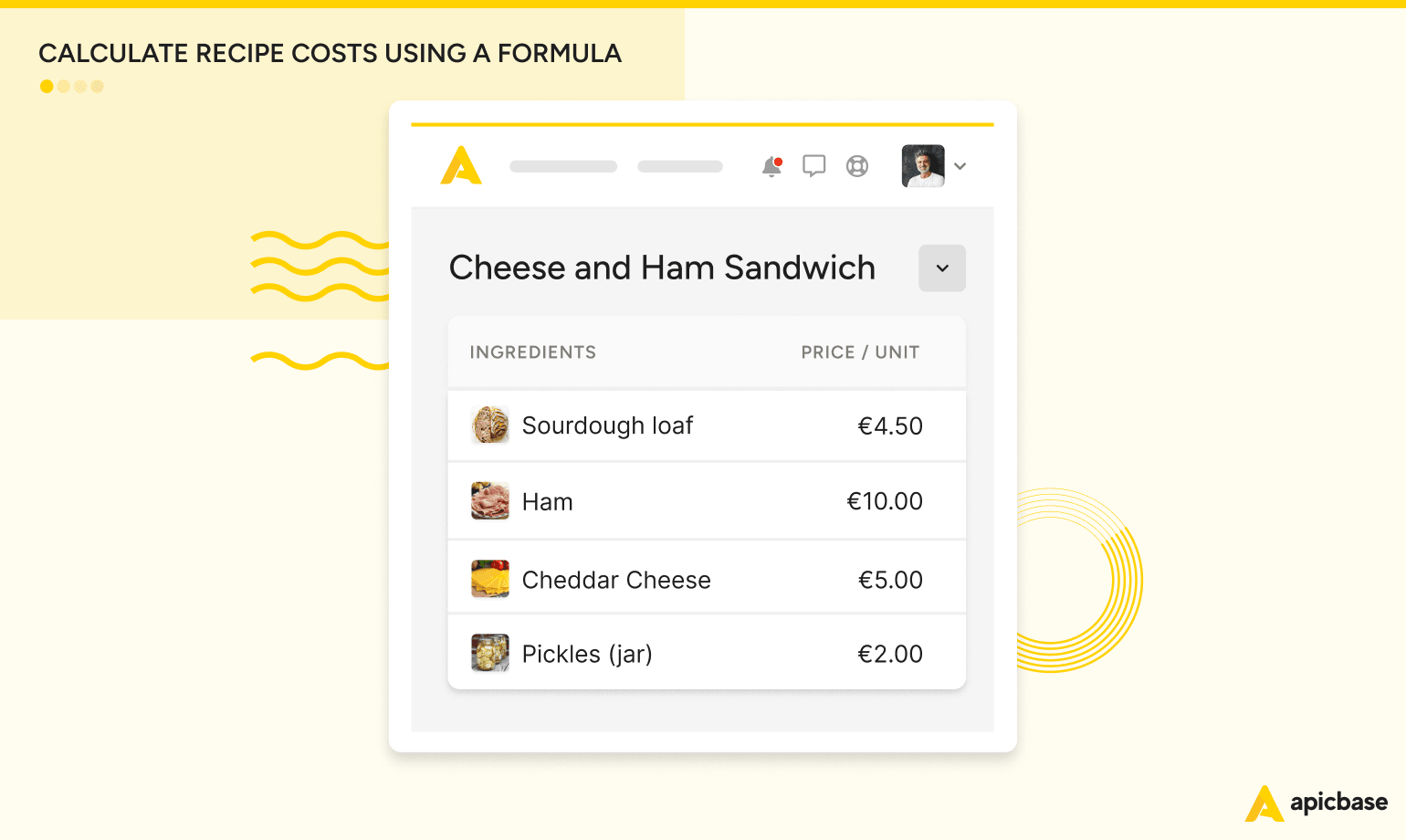
2. List the price of each serving
Step 2 is to determine the purchase price for each ingredient to calculate the cost per serving. You do this by dividing the cost of each unit by the number of servings it yields.
For example, if a sourdough loaf costs €4.50 and yields 15 slices, dividing 4.5 by 15 gives you €0.30, meaning the price for each slice of bread is €0.30.
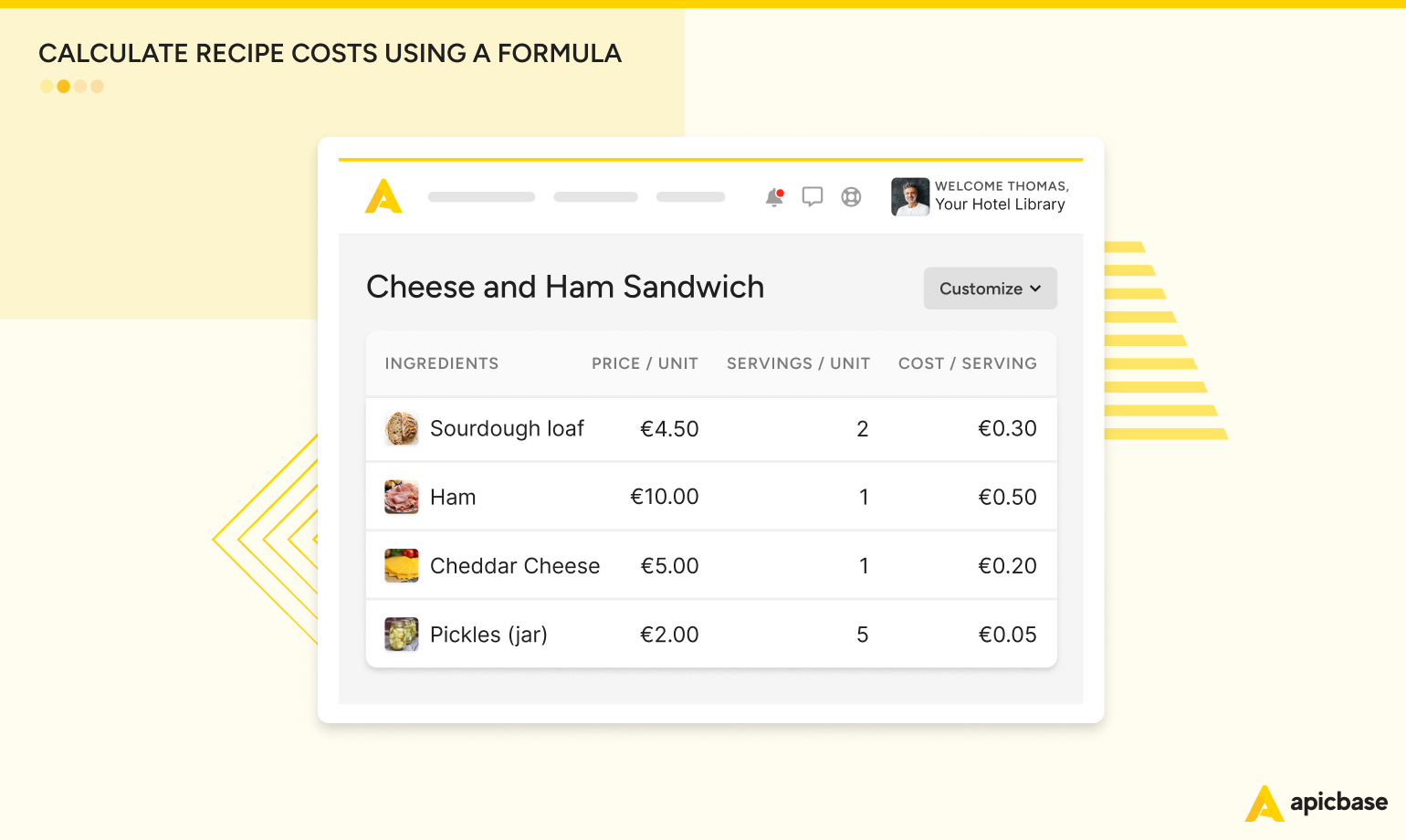
3. Calculate the price per item
The next step is to calculate the expense of each ingredient included in the recipe by considering the quantity needed.
For instance, if the sandwich calls for two slices of bread and each slice costs €0.30, then the total cost for the bread used in the recipe would be 2 x €0.30 = €0.60.
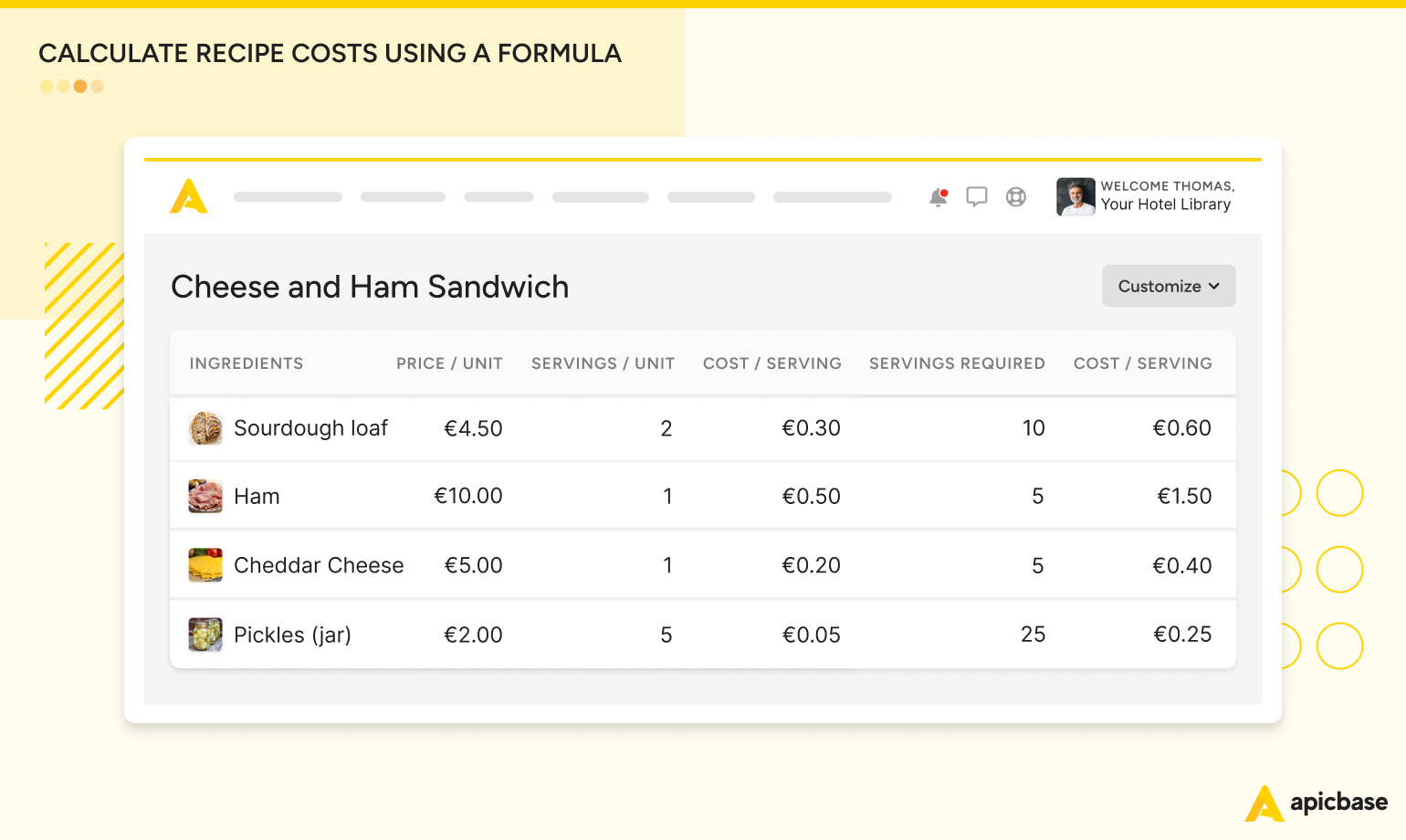
4. Plug the costs into a formula
The recipe costing formula is a simple sum. The hard work is already over.
After tallying the cost of your ingredients, the expense per serving, and the quantities used for each serving, sum up these figures to get the total cost of your recipe.
For instance, ham is the priciest component in our scenario, with three slices amounting to €1.50 per sandwich. Thus, the overall cost for making one sandwich comes to €2.75.
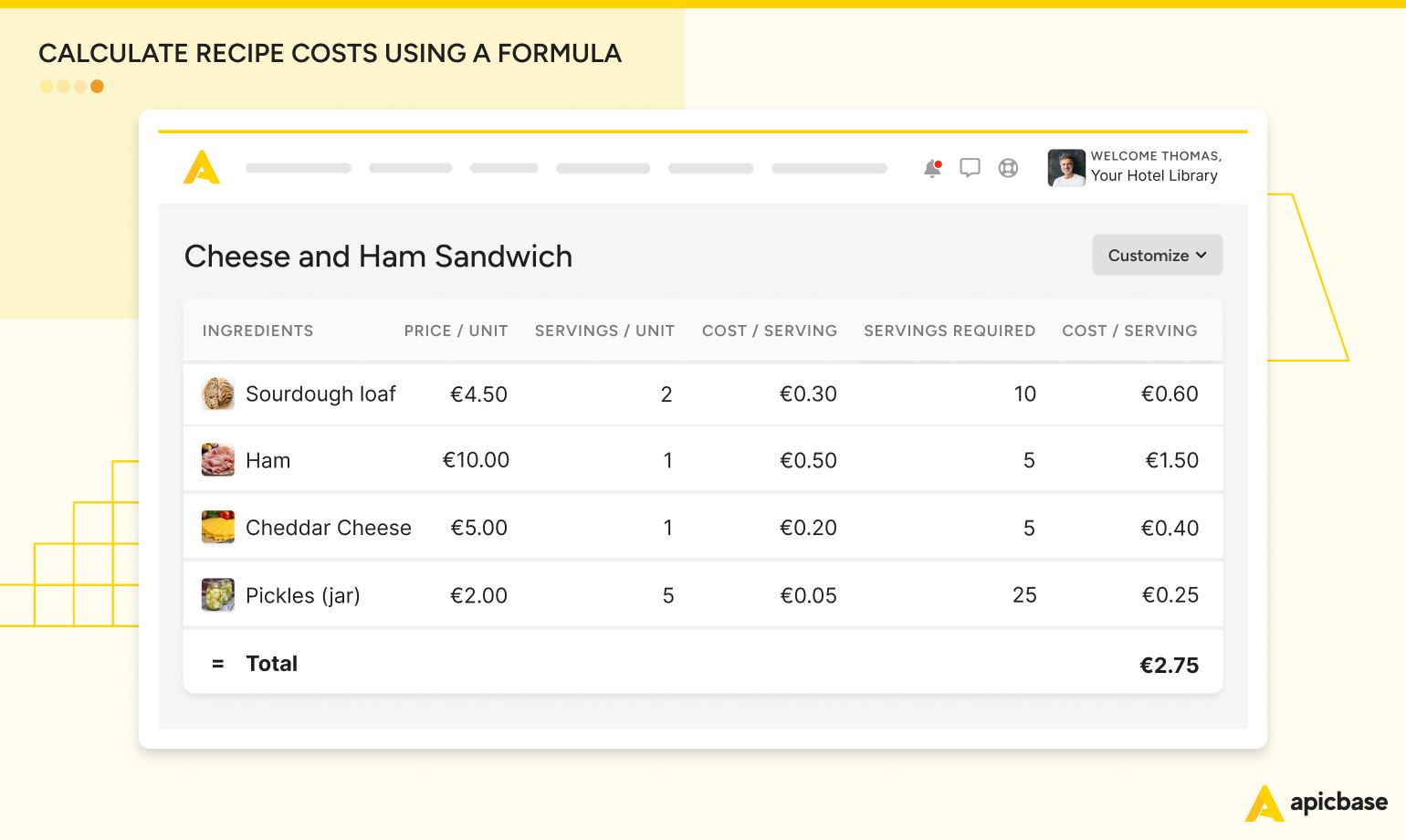

[Free Download] Menu Engineering Worksheet
Don’t start from scratch. Download a ready-made online menu engineering and worksheet with formulas. Automate your menu calculations. Create profitable menus and identify opportunities, losers, workhorses and winners among your recipes.
How to Manage Recipe Costs Effectively
Managing recipe costs is essential for maintaining a healthy bottom line in the culinary industry. Here’s a streamlined guide to keeping your recipe costs in check:
- Monitor ingredient prices: Prices fluctuate due to market changes. Keeping an eye on these variations helps you adjust your costs in real-time.
- Use the right tools: Don’t use a hammer to shell an egg. Similarly, stay away from calculators and spreadsheets. They are far too crude for what you want to achieve.
Instead, opt for inventory and recipe costing software. These tools simplify the costing process, automate repetitive tasks, and provide insights through real-time data, all in one place. - Actual vs Theoretical Costs: Make it a routine to calculate the difference between what you actually spend on ingredients (actual costs = inventory depletion) and what you should be spending under ideal conditions (theoretical costs = recipe costing x sales).
The difference between the two highlights the areas where you are losing money. - Negotiate with vendors: Regular interactions with your suppliers will lead to better prices. Ensure you have the exact numbers when you open the conversation, and keep your eyes open for menu efficiencies or more cost-effective ingredients.
- Don’t Skip Staff Training: Educate your teams on the importance of portion control, efficient meal preparation, and inventory management to minimise waste and reduce costs.
- Maximise Ingredient Use: Streamline your recipes to use the same ingredients across multiple dishes. It not only simplifies inventory management but also helps all restaurant outlets to get bulk purchase discounts.
- Optimise vendor orders: Try to consolidate your purchases. Ordering larger quantities less frequently will help you meet minimum purchase requirements for better pricing. Staff training and solid inventory management are essential.
Automate Your Recipe Calculations and Apply Advanced Analytics
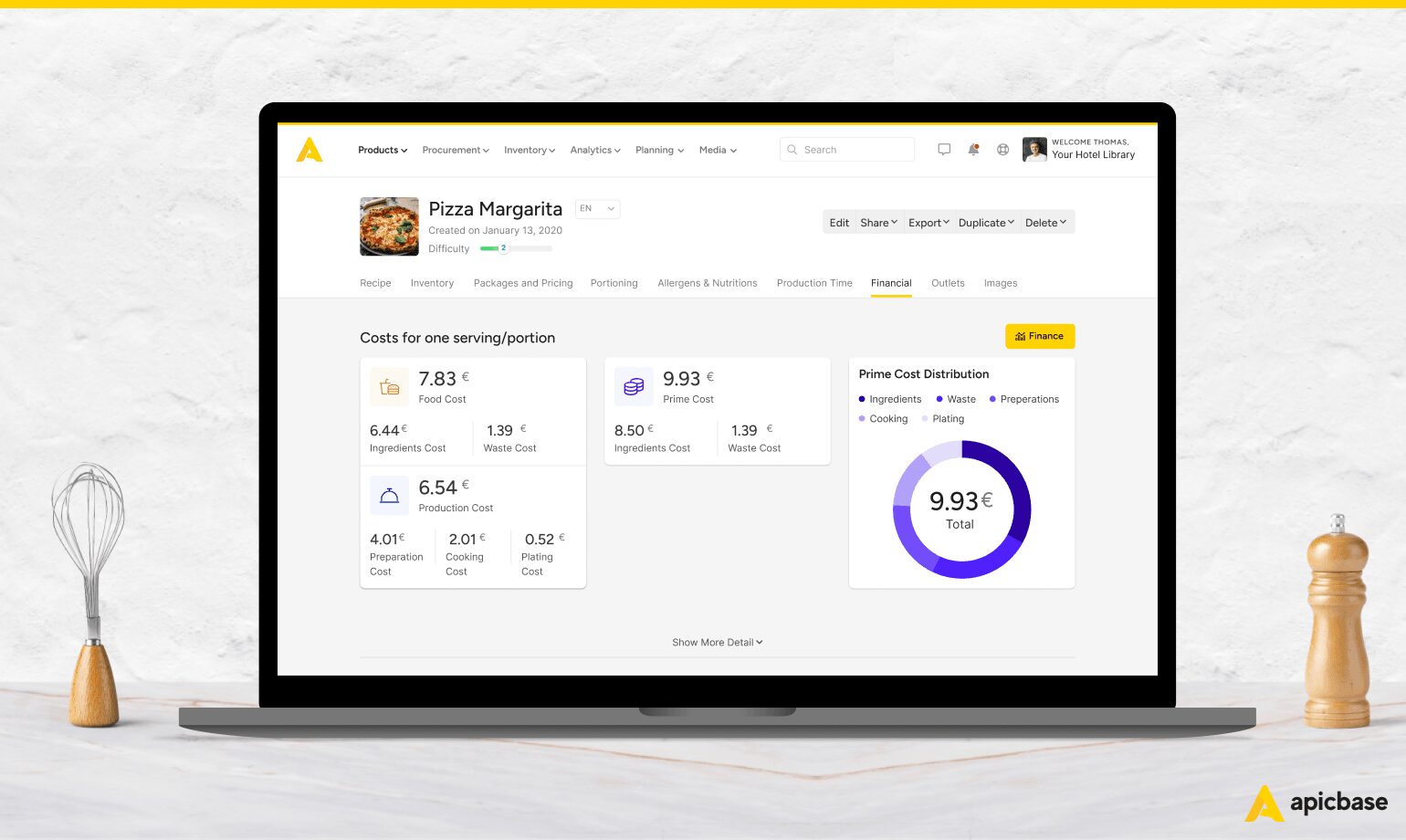
Say goodbye to the tedious task of sifting through invoices to determine units, quantities, and prices for each ingredient.
Apicbase transforms the complex task of recipe costing into a straightforward process.
The system automates recipe costing, leveraging accurate, real-time inventory and supplier data. Users at HQ and on the floor have everything they need to manage food costs in one place.
Your restaurant and leadership teams have access to:
- Real-time inventory levels,
- Procurement trends,
- Vendor performance,
- Profit margins on recipe and menu levels,
- Actual and theoretical food costs, and
- Real-time sales data.
This comprehensive overview enables a deeper understanding of operational efficiencies, empowering enterprise restaurant companies to strategically adjust menus in response to changing ingredient prices and market conditions.

Simplify Restaurant Operations with Apicbase
Automate your recipe costing and inventory management with Apicbase to ensure seamless operations across all your restaurant outlets.
Tap the below to see Apicbase in action.

